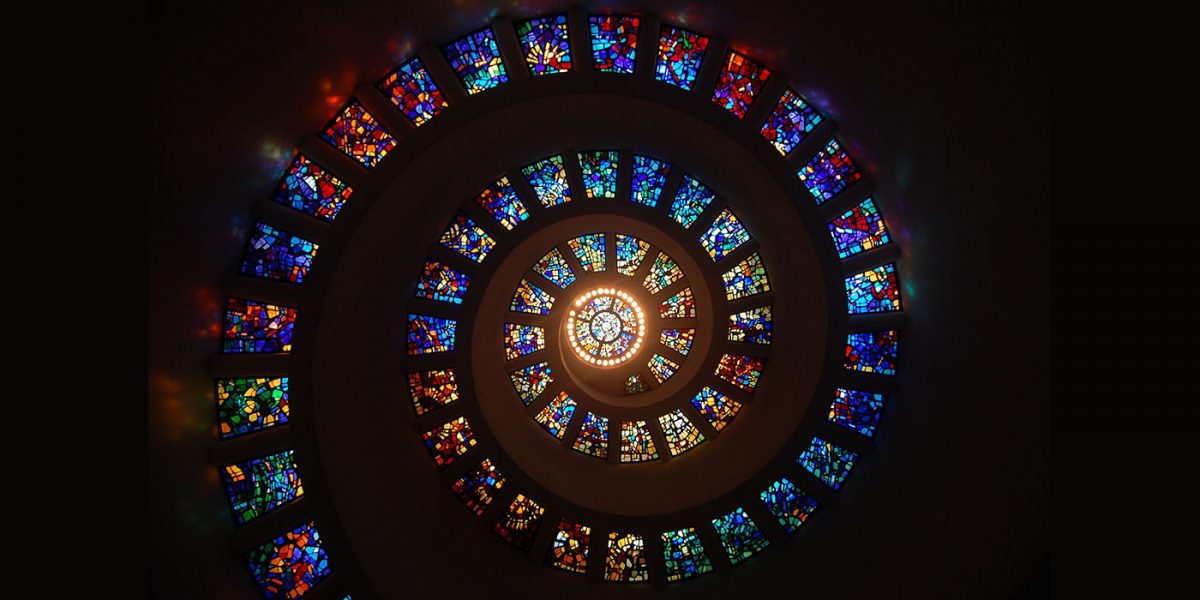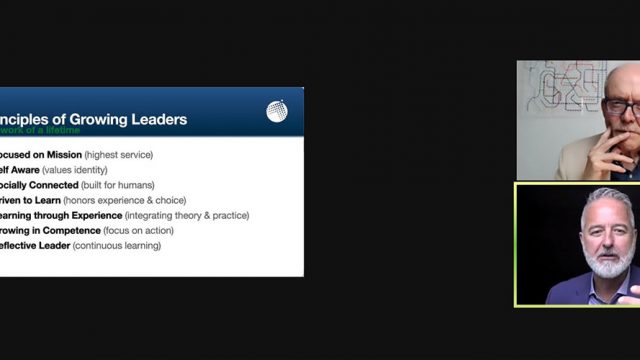The center of Scripture, doctrine, church structures, and even mission.

Christ truly is the center of Scripture, doctrine, church structures, and even mission. We asked four Adventists from Argentina, Kenya, New Zealand, and Zimbabwe to look for Christ in four key Adventist beliefs (ranging from salvation to the sanctuary to the state of the dead to the millennium). You will be blessed by their insights—Editors.
#Sanctuary – Salvation Transactions
When I see a commercial bank, I often think of the sanctuary. As a financial institution, the bank is an integral part of the infrastructure of modern economies. It is the nerve center of economic transactions. At the heart of all these transactions is the accounting prin- ciple of double entry. The crediting of one account is made possible by the debiting of another for the same amount. The same principle is at the heart of the sanctuary services. That institution is the hub of God’s eternal transactions of salvation.
Imagine Adam and Eve in Eden. They were guilty. They hung their heads in shame and fear. Through that act of disobedience to their Maker, they incurred a debt they and their posterity could never pay. Mercy interposed, promising them that One would come and pay the debt He did not owe (Gen. 3:15). One can think of this promise as a postdated check written by divinity in humanity’s name. It was to mature and be cashed at Calvary.
Until then, however, the check was kept before Israel in the symbols of the sanctuary services. Sinners coming to the sanctuary on any day with a debit balance acknowledged their spiritual bankruptcy and were immediately credited from the Lamb’s life account. The name Jesus spells out its bearer’s mission to “save His people from their sins” (Matt. 1:21). John drew the crowd’s attention to Jesus as “the Lamb of God who takes away the sin of the world” (John 1:29).
By accepting Him, we acknowledge our spiritual insolvency. By receiving us, He credits us with His righteousness as He is debited with our unrighteousness. Our debit balance is paid off only by His credit balance. Jesus is heaven’s eternal currency in the transaction of salvation. What is your account balance?
Watson Mbiriri just graduated with a Ph.D. in Old Testament from the Adventist Institute of Advanced Studies. He lives and ministers in Harare, Zimbabwe.
#Salvation – Wonder of wonders
Mama knitted a pretty cardigan for my little sister, Rhoda. It was one of a kind, in a class all its own, an expression of rich artistic handiwork. Looking at it, one felt an instant sense of coziness and warmth all wrapped up in beauty. It was simply adorable.
Reserved for special occasions and Sabbaths, Rhoda’s cardigan was not your “everyday-wear” kind. When one day the cardigan went missing, we looked for it for days on end, to no avail. If it had been spotted, Mama would have bought it back, whatever the cost. We were sad. Mama was sad too. Mama’s loveliest handiwork piece was gone!
So it was when God’s centerpiece of creation, humanity, was snatched from His care by Satan.
Knowing that Adam and Eve would be vulnerable to straying from His presence, the Master Designer preplotted a plan to save them. The consequences of the stray would be dire, culminating in eternal death. But oh! As the enemy marveled and celebrated over his newly acquired possession, God wept over His lost masterpiece, “for the wages of sin is death” (Rom. 6:23). The Master Designer determined to save humanity from eternal death through the plan of salvation—the wonder of wonders.
The plan had to be executed. The law regarding the consequences of sin still stood. “Without the shedding of blood there is no forgiveness” of sin (Heb. 9:22, NIV). Sinners transferred their sins to an innocent lamb. The lamb died. Sinners stood forgiven and justified by the blood of the lamb. Each sinner brought their own lamb for their sins to be forgiven. God also brought His lamb, as if He too had sinned! He took our sins upon Himself so that we would not die eternally. “Behold! The Lamb of God who takes away the sin of the world!” (John 1:29). God thus bought His masterpiece back to Himself.
Jesus, the Lamb of God. What love! What a price!
Martha Mambo is a lecturer at the University of Eastern Africa, Baraton, in Kenya.
#Millennium – One-on-one with Jesus
Here are some phrases and concepts that many of us think of when we consider the millennium doctrine: “bottomless pit,” “Satan in chains,” “second resurrection,” “Gog and Magog,” “judgment,” “fire
from heaven,” “lake of fire,” and more. In fact, we might even be able to give a Bible study on the millennium and not mention Christ even once! So where do we find Christ in the millennium doctrine?
One of the main aspects of the millennium frequently overlooked is that God’s people will live and reign with Christ “for a thousand years” (Rev. 20:4). The millennium actually describes the reign of Christ in heaven, in preparation for the establishment of His eternal kingdom of glory on the earth made new.
At the end of the millennium, when the New Jerusalem descends from heaven and Satan is freed from his chains, he will convince the resurrected nations that he, not Christ, is the legitimate prince of this world. At that moment, according to Ellen White, “Christ again appears to the view of His enemies. Far above the city, upon a foundation of burnished gold, is a throne, high and lifted up. Upon this throne sits the Son of God, and around Him are the subjects of His kingdom. . . . In the presence of the assembled inhabitants of earth and heaven the final coronation of the Son of God takes place.”*
Perhaps our view of the millennium has focused too much on the desolation of the earth and the judgment of the wicked; perhaps we should center our thoughts and hopes more on being able to spend 1,000 years in heaven with Christ, our Saviour and King. Surely nothing can top that!
* Ellen G. White, The Great Controversy (Mountain View, Calif.: Pacific Press Pub. Assn., 1911), pp. 665, 666.
Walter Steger serves as an editor for the South American Spanish Publishing House in Buenos Aires, Argentina.
#Death – No More Tears
The call came late one evening. She was gone. It was unexpected, heartbreaking, and so final.
We raced to her home to gather with family. I walked into the quiet bedroom as she lay as if she were asleep—her face still warm to my touch, her hands folded in peaceful repose. Being this close to death felt surreal. And it hurt. The feeling of it settled like a cloud of darkness, heavy and thick; tinged with regrets, stealing all joy and overshadowing hope.
Her body rested at home as friends and family visited to pay their final respects. During that final week, the grieving that took place around her flower-shrouded casket was cathartic. This memorable time of listening to stories of her life and faith in God transformed our sense of finality into a hopeful longing.
Jesus compared death to being asleep (John 11:11; Mark 5:39), in which the dead know nothing (Eccl. 9:5). This beautiful daughter of God had fallen asleep. Her life of pain, trial, and insurmountable challenges was now redefined by joy, purpose, forgiveness, celebration, and love, only through Jesus her Lord. But we had a hope that though the consequence of sin in our lives warrants death (Rom. 6:23), God promises those who believe in Him that they will have eternal life through Jesus Christ (John 3:16).
We stood by her graveside and sang her favorite hymn, “Blessed Assurance.” I was reminded of God’s all-consuming love that led Jesus to the cross, into the grave, and out of the tomb. The love that remains with us in life and in death and makes eternity possible.
As the strains of the hymn faded, I gently placed a
single white lily on that mound of dirt and whispered,
“See you when Jesus comes, sis.”
Hana Greenfield lives in Auckland, New Zealand, with her husband and their five children. She is in the final stages of completing a degree in counselling and enjoys blogging about life, relationships, healing, and discipleship.








